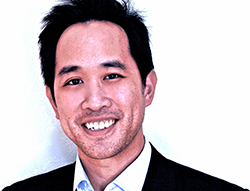Chinese American Families—Looking Beyond the Stereotype
For a number of years before graduate school, I worked as a counselor at an international school in China. Though most of my students and their families identified ethnically as Chinese, they were, in fact, a diverse group who had relocated to China from around the globe. Chinese American and Chinese Canadian students sat alongside students from Hong Kong, Singapore, and Taiwan, and at times, it seemed that the only thing they shared in common was their Chinese surnames.
The students also diverged in their classroom performance. Our school had our share of Advanced Placement and National Merit scholars, and we sent students every year to some of the best universities in the world. But we also had students who showed little interest at the prospect of a four-year college, as well as those who struggled with pronounced academic and behavioral challenges. In all, it was a sharp counterpoint to the picture of Chinese students as a homogenous group of high-striving academic achievers.
In retrospect, these experiences were critical in shaping the questions that drive my research in psychology. What factors – at the individual, family, or broader contextual level – contribute to Chinese children’s academic success or struggle? And how can Chinese immigrant families navigate the stressors of cultural change? Over the past few years, I’ve had the opportunity to examine these questions with Qing Zhou PhD and colleagues at the University of California, Berkeley. Our findings have highlighted a number of factors that are associated with the development and well-being of Chinese and Chinese American children, including parents’ expression of emotion in the family (1), children’s relationship with their teachers (2), and socioeconomic characteristics of families’ neighborhoods (3).
Though our research is still ongoing, two emerging themes from our work may be particularly relevant for practitioners working with Chinese American immigrant families.
First, language plays a critical role in the interactions within the Chinese American immigrant family.
Families use language – for better or worse – to express emotions, discuss conflicts, or simply to navigate the demands of everyday life. These dynamics become considerably richer and more complex in immigrant families where more than one language is spoken, and spoken with varying degrees of proficiency among family members. For example, in a study of Chinese American immigrant families published earlier this year in Developmental Psychology, my colleagues and I found that “gaps” between parents’ and children’s Chinese proficiencies were associated with more behavior problems among children (4).
In another study, my colleague Annie Tao, PhD, found that Chinese American mothers’ use of English during a storytelling activity with their children was positively correlated with their use of emotion-related questions and explanations (5). Finally, in a recent review paper, we reviewed evidence suggesting that within multilingual families, the language a parent uses to express an emotion – e.g., “I love you” spoken either in Chinese or English – may influence not only the way that emotion is expressed, but also the way that their emotion is perceived by other family members (6).
What can we take away from these findings? Most simply, language matters.
Family-based interventions with Chinese American immigrant families should examine not only the general language proficiencies of individual family members, but also the way specific languages are used in everyday family interactions, particularly those involving emotion: for example, what language do family members use when they are angry? What language do family members use to express affection? And what language(s) are most conducive for addressing an emotionally-charged topic?
The diversity I saw among my students in China is reflected on a much larger scale within the Chinese American community in the United States.
The second theme that emerges is one of within-group diversity. Like my students and their families, foreign-born Chinese Americans come to the United States from all corners of the world: the birth countries of foreign-born Chinese Americans include not only China and other East Asian countries, but also countries in Europe, Africa, and South America (7). At the same time, nearly 1 in 4 Chinese American adults are not immigrants at all, with some tracing their American-born lineage across multiple generations8. In this sense, Chinese Americans are both old and new Americans: Chinese Americans have been included in U.S. Census estimates for over 150 years, yet new Chinese American immigrants today constitute the second-largest foreign-born population in the United States (8,9).
Chinese Americans also inhabit the extremes of the socioeconomic spectrum.
The 2010 Census estimates indicate that more than half of Chinese American adults hold bachelor’s degrees, compared to 28.2% of the U.S. population. Yet a higher percentage of Chinese American adults (18%) have failed to complete high school, compared to only 14.4% of the U.S. population. In a similar trend, Chinese Americans report household annual incomes that are higher than the national median ($65,060 vs. $49,800), yet a higher percentage of Chinese Americans also fall below poverty lines (13.7% vs. 12.8%) 8.
For practitioners working with Chinese American families, these demographics provide an important reminder of within-group diversity. For some Chinese American families, issues of immigration and acculturative stress will likely be key clinical considerations. And yet, for third, fourth, or fifth-generation Chinese American families, these topics may well be irrelevant to the presenting problem. Likewise, while a sizable body of research has highlighted cross-cultural differences between European American and Asian American family processes (e.g., parenting styles, emotional processes (10-13), it is important to keep in mind that successive generations of acculturation may serve to temper these differences over time.
References
- Chen, S. H., Zhou, Q., Eisenberg, N., Valiente, C., & Wang, Y. (2011). Parental expressivity in Chinese families: Relations to parenting styles and children’s psychological adjustment. Parenting: Science and Practice, 11,288-307.
- Lee, E.H., Zhou, Q., Ly, J., Main, A., Tao, A., & Chen, S.H. (in press). Neighborhood characteristics, parenting styles, and children’s behavioral problems in Chinese American immigrant families. Cultural Diversity and Ethnic Minority Psychology. Advance online publication. doi: 10.1037/a0034390
- Ly, J., Zhou, Q., Chu, K., & Chen, S.H. (2012). Teacher-child relationship quality and academic achievement of Chinese American children from immigrant families. Journal of School Psychology, 50 (4), 535-553.
- Chen, S.H., Hua, M., Zhou, Q., Tao, A., Lee, E., Ly, J., & Main, A. (2014). Parent-child cultural orientations and child adjustment in Chinese American immigrant families. Developmental Psychology, 50(1), 189-201.
- Tao, A., Zhou, Q., Lau, N., & Liu, H. (2013). Chinese American immigrant mothers’ discussion of emotions with children: Relations to cultural orientations. Journal of Cross-Cultural Psychology, 44, 478-501.
- Chen, S.H., Kennedy, M., & Zhou, Q. (2012). Parents’ expression and discussion of emotion in the multilingual family: Does language matter? Perspectives in Psychological Science, 7 (4), 365-383.
- U.S. Census Bureau, 2006-2010 American Community Survey
- Pew Research Center. 2012. The rise of Asian Americans Washington, DC: Pew Social & Demographic Trends. (June 19, 2012 publication)
- McCabe, K. (2012). Chinese Immigrants in the United States. Migration Policy Institute (January 18, 2012 publication). Retrieved from: http://www.migrationpolicy.org/article/chinese-immigrants-united-states/
- Chao, R. K. (1994). Beyond parental control and authoritarian parenting style: Understanding Chinese parenting through the cultural notion of training. Child Development, 65(4), 1111-1119.
- Doan, S. N., & Wang, Q. (2010). Maternal discussions of mental states and behaviors: Relations to emotion situation knowledge in European American and immigrant Chinese children. Child Development, 81, 1490–1503.
- Camras, L. A., Bakeman, R., Chen, Y., Norris, K., & Cain, T. R. (2006). Culture, ethnicity, and children’s facial expressions: a study of European American, Mainland Chinese, Chinese American, and adopted Chinese girls. Emotion, 6(1), 103.
- Wang, Q. (2001). “Did you have fun?”: American and Chinese mother–child conversations about shared emotional experiences. Cognitive Development, 16(2), 693-715.

